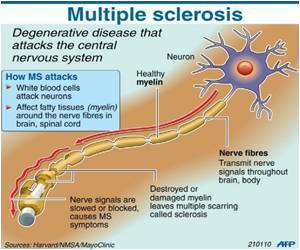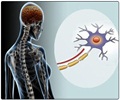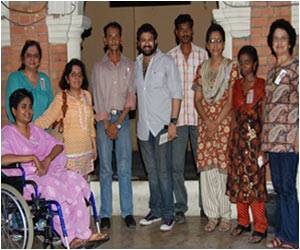A quick eye scan can help assess the extent of brain damage accurately in people suffering from multiple sclerosis.

"Eye scans are not that expensive, are really safe, and are widely used in ophthalmology, and now that we have evidence of their predictive value in MS, we think they are ready for prime time. We should be using this new quantitative tool to learn more about disease progression, including nerve damage and brain atrophy."
Calabresi and his colleagues used optical coherence tomography (OCT) to scan nerves deep in the back of the eye, applying special software they co-developed that is capable of assessing previously immeasurable layers of the light-sensitive retinal tissue.
Calabresi and his team reported measuring thickness or swelling of the inner nuclear layer of the retina in 164 patients with MS and 60 healthy controls, following changes in these tissues over four years. At the same time, they also used brain MRI to measure inflammation spots directly, and performed clinical tests to determine disability levels.
The more inflammation and swelling the researchers found in the retinas of the MS patients, the more inflammation showed up in their brain MRIs. The correlation, they said, affirmed the value of the retinal scans as a stand-alone surrogate for brain damage.
Having such information so easily available could allow physicians to accurately tell how far the disease has progressed, and to better advise patients about how they should proceed with their care.
Advertisement















